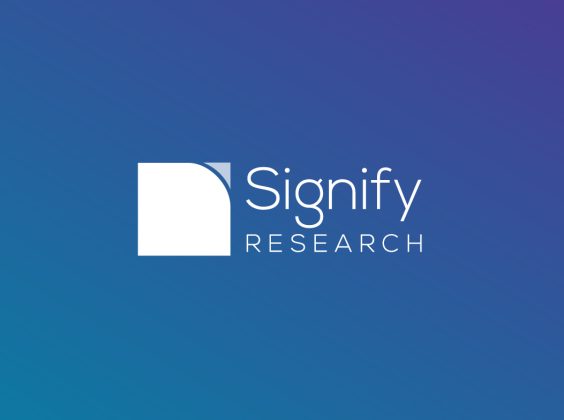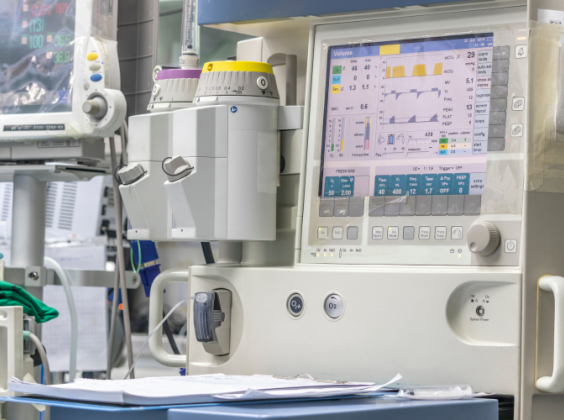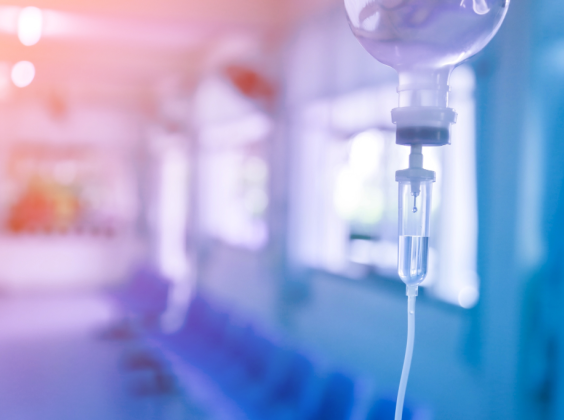
Written by

Cranfield, UK, 22 June 2023 – Earlier in June, the EuroAnaesthesia annual congress was held in the sunny delights of Glasgow, Scotland. Sustainability was the buzz topic at the event and was highlighted by the dedicated ‘Dear Green Place’‚ deemed a space for exploring, learning, meeting, and talking about sustainability. As such, it was clear why Glasgow was chosen for this year’s event with a large play on Glasgow’s Gaelic name, Glaschu, which means ‘Green Glen’.
Signify Research’s Clinical Care Analyst Kelly Patrick attended the show and has provided her take on the major topics and themes discussed whilst there.
Trend One: Vendors are pushing sustainability efforts – but will acceptance improve?
The ‘Dear Green Place’ was located at the core of the exhibit hall and was a haven of all things green, relinquishing some calm and serenity away from the busy exhibit floor. The five islands within the ‘Dear Green Place’ focused on core topics including:
- Building networks and changing practice
- Anaesthetic gases and drugs
- Waste and scavenging
- Energy efficiency, renewable energies, and circular economies
- Beyond anaesthesia
The islands showcased equipment from vendors in addition to an overview of their core sustainability efforts on the above topics. Exhibitors with dedicated booths within the pavilion included Draeger Medical, GE Healthcare, Philips, Masimo, Baxter Healthcare, Aguettant and 3M. Exhibiting technologies included gas scavenging technology and solutions that reduced anaesthetic gas consumption, in addition to efforts the vendors had made to pledge to zero waste to landfill. To highlight a few:
Both Draeger Medical and GE Healthcare were demonstrating their dedicated tools aimed at reducing anaesthetic gas consumption and providing additional insight on cost analysis. However, it was very clear that the successful uptake of such tools is currently limited by the acceptance and drive for sustainability from anaesthetists themselves. There was certainly lots of interest at the exhibit from anaesthetists wanting to learn more about these solutions during the event, but a greater push is required for users to fully adopt the benefits (and associated additional costs) the tools can offer. Both vendors were also actively demonstrating the compatibility of their anaesthesia devices with gas capture solutions from SageTech and Baxter Healthcare. However, there are still several hurdles to overcome to fully adopt gas retention and recycling, with dedicated infrastructure and resource required to integrate these solutions fully into anaesthesia care provision. There is also a call for supporting regulations to be developed to enable movement of recycled anaesthetic agents between facilities across Europe.
Masimo’s efforts toward sustainability are predominantly focused on the recycling and packaging of sensors used in patient monitoring, closely following the company’s pledge to zero waste to landfill and less material. Their efforts include:
- Reducing the size and number of materials
- Miniaturising – making things wireless
- Saving packaging by reducing size
- Utilising electronic PDFs instead of printed documents
The ESAIC Village was also a place for various European societies to demonstrate their initiatives on the dedicated poster wall, providing an overview of their developments and thoughts focused on ‘How to improve sustainability in anaesthesia and intensive care: situational awareness and national initiatives’. It is clear that the industry is very dedicated to helping drive a more sustainable healthcare market, with several vendors developing tools and solutions to reduce the wider impact of anaesthesia care. However, this also needs to be supported by anaesthetists in addition to healthcare policy makers to enable their mainstream uptake. The session organised by the ESAIC Sustainability Committee ‘Carbon footprint in anaesthesia: can I really make a difference?’ was heavily attended, so may be an indication that priorities are shifting in a positive direction. However, additional guidance from the industry is required to demonstrate the cost savings of sustainability solutions over time, to help support the initial upfront costs required to generate change.
Trend Two: Data integration and clinical decision support is on the rise in anaesthesia care
Whilst visiting the various booths in the exhibit hall, it was very apparent that many of the vendors were busy demonstrating their digital solutions and wider clinical decision tools. Signify Research’s recently published report on the Anaesthesia market highlighted that digitalisation reforms have increased since the pandemic and this has driven the need for anaesthesia solutions to be interoperable with wider clinical devices in addition to supporting health information systems. As such, the interest in data analytics and clinical decision support tools is increasing, to help reduce the burden of patient backlogs on healthcare facilities, both in terms of financial and staff resource.
Taking centre stage on the first day of the exhibit, Mindray showcased its new updated A7 anaesthesia machine. The newest edition of the A7 has a focus on safety and efficiency with features such as Anaesthetic Agent (AA) prediction, O2 prediction and more precise monitoring capabilities. The combination of anaesthesia and infusion visibility into one solution also enables visualisation of the total effect of anaesthesia provision by combining the trend of AA for the past, current and future together with MAC value. Mindray has focused its strengths across the clinical care device market, being the only provider active across the anaesthesia, ventilator, infusion and monitoring segments, maximising on the capability of integrating these solutions into one platform.
Philips was educating physicians on its array of clinical decision support tools, both at the booth in addition to its dedicated symposium. Its main focus was on tools that improve patient safety through trend-based clinical decision tools and event surveillance. Philips was also showcasing its recently launched patient monitor avatar. An image based clinical decision support tool that provides a visual representation of the patient’s status within the peripheral view of the anaesthetist. The ‘gingerbread man’ alters shape, size and colour depending on key metrics, highlighting issues in a simple format, to enable quick adjustments when required.
GE Healthcare was demonstrating its CareStation Insights solution in its dedicated symposium. The symposium was led by Dr Yann Gricourt from Centre Hospitalier R√©gional Universitaire de N√Æmes, who discussed the benefits of using insightful analysis in the OR to help provide feedback on anaesthesia provision in addition to critical costing analysis. At its booth the Carescape CANVAS and Portrait solutions were once again exhibited to demonstrate GE Healthcare’s movement to flexible monitoring to cater to various care settings, and the support of patients outside of the high acuity departments.
Alongside discussion of the upcoming launch of its new BIS Advance monitor, Medtronic also demonstrated its RespArray solution at the EuroAnaesthesia congress, which is due for its launch in the European region later in the summer. The RespArray combines Medtronic’s core respiratory parameters in a single box, offering SpO2, Capnography and all indexes and smart algorithms all in one solution. This signals Medtronic’s journey to expand its presence in the monitoring market alongside other multiparameter vendors.
Trend Three: MDR rules strike – innovation stifled by new requirements
The general lack of new product announcements certainly didn’t go amiss at the show, with several vendors venting their frustrations at the barriers to entry of new solutions following updates to the MDR rules. On the 20th of March 2023, the EU Commission published in the Official Journal of the European Union EUR- Lex the Regulation 2023/607 which formalised the extension of the Medical Devices Regulation (MDR) deadline for re-certifying legacy devices. The deadline for re-certifying Class IIa and Class I devices subsequently shifted from May 2024 to 2027-2028. Although the extension was welcomed by vendors, it didn’t remedy the short-term issues whilst undergoing certification efforts, with many solutions facing delayed MDR approval. The significant time and financial resource required to certify new solutions is also posing a sufficient threat to product innovation within the healthcare industry. Although vendors appreciate efforts to improve patient safety, many are calling for industry action to help improve the process, to ensure the European healthcare market isn’t stifled, and patient care continues to advance.
Trend Four: Lack of presence from leading players didn’t go unnoticed
Despite being ranked first and third in terms of market share in the Western European anaesthesia device market, both Draeger Medical and Getinge did not have a dedicated exhibit booth at the event, with many questioning the lack of presence. Both vendors were linked to either promotional material (Getinge featured on the entrance banner to the exhibition space) or the sustainability pavilion (Draeger was present in ‘The Green Place’ with its flagship sustainable solution). However, it emphasised that vendors are facing critical decisions on where to focus their marketing and educational budgets. It is likely that other vendors will need to make the difficult decision as to whether events are the best platforms to reach their target audience. If innovation is stifled further through the MDR regulations, new product launches will be limited, and new initiatives are likely to be required to engage with attendees and promote existing solutions.
Related Research
Signify Research has recently published its Anaesthesia Devices -World – 2023 and Ventilators – World – 2023 reports, which both build on our 2021 editions of the reports. Signify Research is also in the process of updating its market analysis of the patient monitor market in its upcoming report Patient Monitors – Interim Report – 2023. The reports provide a data-centric and global outlook of the market. The reports blend primary data collected from in-depth interviews with healthcare professionals and technology vendors to provide a balanced and objective view of the market.
About Kelly Patrick
Kelly joined Signify Research in 2020 as a Principal Analyst. She has nearly 15 years’ experience covering a range of healthcare technology research at IHS Markit/Omdia. Kelly’s core focus has been on the clinical care sector, including patient monitoring, diagnostic cardiology, respiratory care, and infusion and associated IT solutions. Kelly holds a BSc degree with honours in Pharmacology from the University of Leeds. In her spare time, Kelly has a passion for running and outings with her husband and three children.
About the Clinical Care Team
The clinical care team provides market intelligence and detailed insights on the clinical care equipment and IT markets. Our areas of coverage include patient monitoring, diagnostic cardiology, infusion pumps, ventilators, anaesthesia and high-acuity IT. Our reports provide a data-centric and global outlook of each market with granular country-level insights. Our research process blends primary data collected from in-depth interviews with healthcare professionals and technology vendors, to provide a balanced and objective view of the market.
About Signify Research
Signify Research provides healthtech market intelligence powered by data that you can trust. We blend insights collected from in-depth interviews with technology vendors and healthcare professionals with sales data reported to us by leading vendors to provide a complete and balanced view of the market trends. Our coverage areas are Medical Imaging, Clinical Care, Digital Health, Diagnostic and Lifesciences and Healthcare IT.
Clients worldwide rely on direct access to our expert Analysts for their opinions on the latest market trends and developments. Our market analysis reports and subscriptions provide data-driven insights which business leaders use to guide strategic decisions. We also offer custom research services for clients who need information that can’t be obtained from our off-the-shelf research products or who require market intelligence tailored to their specific needs.
More Information
To find out more:
E: enquiries@signifyresearch.net
T: +44 (0) 1234 986111
www.signifyresearch.net




